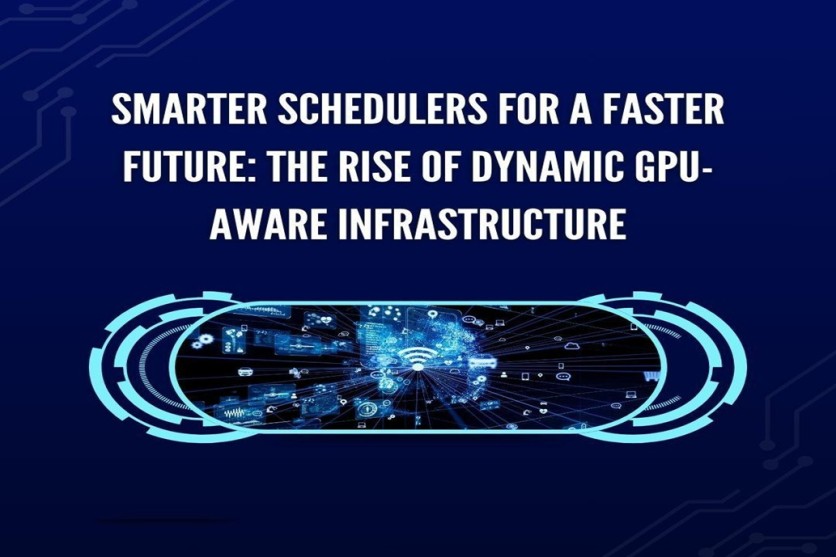
In the Digital era, technical expert Anuj Harishkumar Chaudhari, as artificial intelligence workflows become more data-intensive and widespread, the financial and performance cost of inefficient GPU usage in cloud-native environments has become increasingly visible. Traditional container orchestration systems often assign GPUs as binary resources—either fully occupied or entirely idle—ignoring the nuanced variability in workload requirements. This simplistic allocation model results in low utilization rates and leaves vast computational potential untapped. Dynamic GPU-Aware Scheduling introduces a paradigm shift. Instead of treating GPUs as static resources, it dynamically evaluates utilization, memory bandwidth, thermal constraints, and architectural capabilities. This fine-grained awareness enables higher efficiency, cutting costs, and reducing energy consumption without sacrificing performance.
Listening to the Hardware: Real-Time Metrics at Work
At the heart of this innovation lies robust GPU telemetry. Frequent sampling of utilization, memory throughput, and thermal patterns equips the scheduler with actionable insights. It can detect early signs of congestion or overheating, which is especially critical during long training sessions.
Furthermore, by monitoring queue depths and execution timestamps, the system identifies scheduling bottlenecks and reprioritizes critical inference tasks. Adaptive sampling strategies ensure that this detailed monitoring doesn't introduce excessive CPU or network overhead, striking a balance between insight and efficiency.
Predicting the Future with Machine Learning
Reactive scheduling is no longer sufficient. With predictive analytics, the system forecasts GPU demand using models trained on historical job patterns. Neural networks and LSTM-based time series forecasting help anticipate cluster-wide load several minutes in advance, preventing resource contention before it happens.
Intelligent Placement: More Than Just Availability
Dynamic GPU-Aware Scheduling doesn't just find available GPUs—it matches workloads with the best-suited hardware. It uses affinity-based placement to align tensor-heavy workloads with modern GPUs and supports fractional GPU allocation, maximizing the utility of each processing unit.
Preemption policies prioritize critical jobs without drastically delaying others. Sophisticated checkpointing ensures that interrupted training sessions resume efficiently, maintaining overall throughput. By considering hardware topology, such as NVLink connections, the system minimizes inter-node communication delays for distributed training.
Balancing Shared Infrastructure with Precision
Multi-tenancy often leads to unpredictable performance as different teams compete for resources. This scheduler introduces dynamic quotas and isolation strategies that ensure fairness and maintain service level agreements (SLAs). It automatically adjusts allocations based on business priorities, routing more GPU power to time-sensitive tasks without manual intervention.
Seamless Integration without Disruption
Deploying this scheduling architecture doesn't demand a radical overhaul. It integrates smoothly into existing Kubernetes setups using custom scheduler extensions, resource definitions, and familiar API patterns. Backward compatibility ensures that legacy workloads can continue running while benefiting from improved scheduling logic.
The system also supports detailed configuration of GPU requirements, including model-specific hardware features and interconnect preferences. This allows developers to optimize performance with minimal changes to their workflow definitions.
Tangible Performance Gains Across Industries
Real-world deployments have demonstrated significant improvements in both throughput and efficiency. For instance, in high-speed manufacturing settings, GPU utilization increased while maintaining low latency, enabling advanced quality inspection without extra hardware. Scientific computing and genomics applications benefited from faster job completion times and more predictable results.
Low-latency inference services, such as those supporting autonomous robots or financial fraud detection, saw a drop in response time variability. These improvements directly impacted user satisfaction and business outcomes.
Toward a Federated, Energy-Conscious Future
Looking ahead, the architecture is being extended to support cross-cluster federation, allowing workloads to shift between on-premise and remote environments based on latency and resource availability. This offers a unified global infrastructure where workloads follow the sun, maximizing utilization across time zones.
Energy-aware scheduling is another emerging frontier. By aligning computation with low-carbon intensity periods and incorporating thermal constraints, organizations can reduce their environmental footprint without performance loss.
The system also supports integration with heterogeneous hardware like FPGAs and TPUs, using abstraction layers to match workloads to the most efficient compute units—further enhancing flexibility and sustainability.
In conclusion, Dynamic GPU-Aware Scheduling isn't just a technical upgrade—it's a foundational shift in how we manage resources for AI workloads. By combining predictive analytics, intelligent placement, and deep system integration, it turns traditional scheduling on its head. Anuj Harishkumar Chaudhari's work highlights how organizations can transition from reactive GPU usage to proactive, intelligent orchestration—ushering in a new era of scalable, efficient, and high-performing AI infrastructure.
ⓒ 2025 TECHTIMES.com All rights reserved. Do not reproduce without permission.




